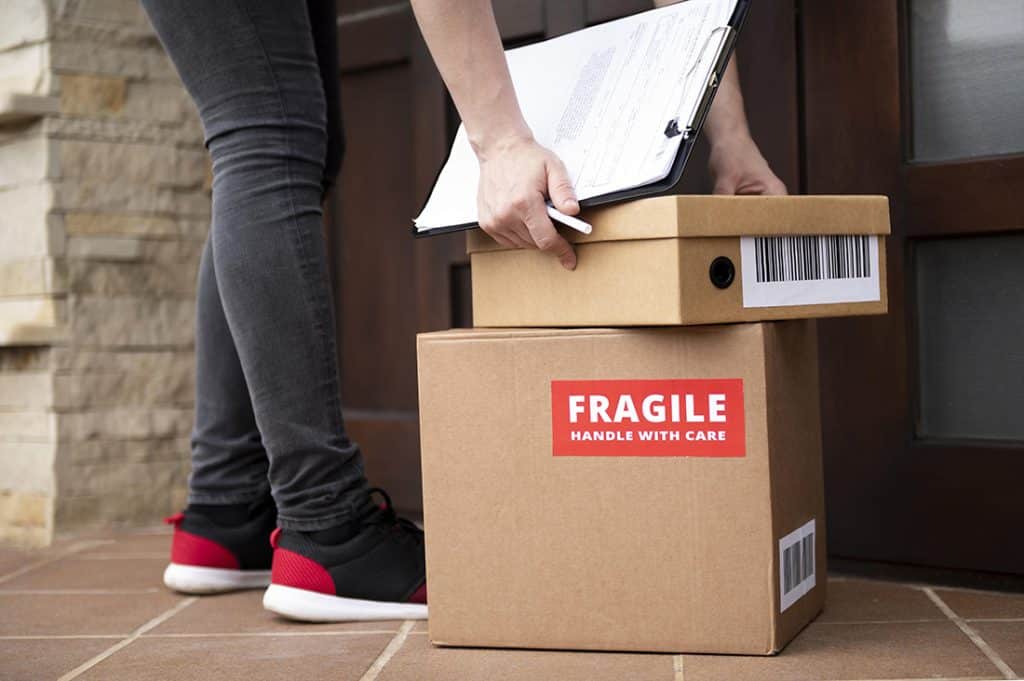The Overshare: When Bubble Wrap Betrays You
So here’s my confession: once, I mailed a vintage teacup — bone china, hand-painted, delicate as my last shred of patience during tax season — in what I thought was a lovingly overstuffed cocoon of bubble wrap. I taped, I swaddled, I muttered incantations to the gods of FedEx. And yet? It arrived shattered. Not cracked, not chipped — obliterated. Basically confetti with a handle.
Which brings us here. Because shipping fragile things is not about “winging it” with a roll of bubble wrap you found under the bed. It’s about physics, pressure points, and choosing the right protective packaging so your customer doesn’t open their box and send you an email subject-lined: “Um, hi, what is this pile of dust?”
The Science of Shipping: Why Stuff Breaks in Boxes
Let’s break it down without making you relive high school physics: packages are dropped, kicked, stacked, and occasionally yeeted across warehouses. The violence is real. Fragile products meet four enemies in transit:
- Shock: That drop-kick scenario. Sudden impact = instant heartbreak for your teacup.
- Vibration: Trucks and planes shake. Little tremors add up and can loosen closures or rattle fragile parts.
- Compression: Stacks of boxes = a whole lot of weight pressing down. Think of it as your product at a particularly aggressive yoga class.
- Temperature & Humidity: Okay, not technically impact, but still brutal. Heat warps plastic, moisture sneaks in, and suddenly your packaging is the Titanic.
Protective packaging isn’t just filler — it’s armor. And every product deserves its own suit of armor.
The Protective Packaging Arsenal
Let’s talk options, because this is where people get it wrong by either over- or under-doing it.
Bubble Wrap: The Classic
Yes, bubble wrap is satisfying. Yes, it works — to a point. It cushions, but it’s not a miracle. For heavy items, it compresses flat. For sharp edges, it pops. Treat it as a sidekick, not the superhero.
Packing Peanuts: The Controversial Filler
They’re messy, they’re staticky, and yes, they scream 1997. But when used properly, they suspend objects in the middle of a box so nothing touches the edges (where impact happens). Just… maybe go for the biodegradable ones so you’re not singlehandedly dooming sea turtles.
Foam Sheets & Rolls: The Snug Hug
Foam is brilliant for items that scratch easily (electronics, glassware). It absorbs shocks and doesn’t flatten under pressure like bubble wrap. Think of it as memory foam, but for your shipping trauma.
Air Pillows: Big Cushion Energy
Lightweight, clean, and recyclable, air pillows are great void-fillers. They don’t protect against sharp objects, though. Imagine them as the supportive friend who says “you got this!” but won’t fight anyone for you.
Corrugated Inserts: Custom Armor
For bottles, jars, and anything tall and fragile, corrugated inserts are the holy grail. They keep products from knocking into each other while adding rigidity to the box.
Double-Boxing: The Belt-and-Suspenders Approach
Sometimes, one box just isn’t enough. A fragile item inside a smaller box, surrounded by cushioning, inside a larger box? That’s how you ship a snow globe to Alaska without turning it into a fish tank.
And if you’re overwhelmed, companies like the packaging company sell ready-made protective solutions that save you the existential spiral of asking: “Is this enough bubble wrap or am I sending this vase to its funeral?”
The Step-by-Step: How to Package Fragile Things Without Crying
- Choose the Right Box Size: Too big = item shifts and crashes. Too small = zero room for cushioning. Aim for 2 inches of padding on all sides.
- Wrap the Item Individually: Each fragile thing gets its own layer of wrap (bubble, foam, or paper). Don’t just toss them in together like salad ingredients.
- Cushion the Bottom: Always line the base of the box first. Think of it as the mattress. No one sleeps directly on slats.
- Position & Fill Voids: Place your item in the center, then fill gaps with peanuts, air pillows, or crumpled kraft paper. No wiggle room allowed.
- Top Cushioning: Add padding before sealing. This prevents compression damage from boxes stacked above.
- Seal Like You Mean It: Use strong packing tape. Haphazard taping is the packaging equivalent of texting “k” in an argument.
- Label Clearly: Fragile stickers are not magic shields, but they remind at least some handlers that maybe don’t punt this one.
Sidebar Soapbox: Fragile Stickers Won’t Save You
Let’s rant for a second. A “Fragile” label is not a force field. If you rely on the sticker alone, you may as well write “Break Me Daddy” across the box. Stickers are fine, but they’re supplemental. Real protection = actual cushioning and thoughtful packing.
Emotional Clean-Up: You’re Not a Bad Business Owner
If you’ve ever gotten a heartbreaking email about a broken shipment, you know the shame spiral. You feel like a fraud, you wonder if your customers hate you, you briefly fantasize about shutting down your store and running away to live as a goat farmer.
But listen: shipping fragile products is hard. Even big companies mess it up (ever received a dented Amazon box? Exactly). You’re not incompetent. You’re learning. Every broken mug is an invitation to improve your process — and an opportunity to bond with your customers through graceful, prompt replacements.
The redemptive truth: protective packaging is both science and art, and once you master it, you’ll feel unstoppable. Your customers open boxes to find their delicate treasures intact, and you? You get the sweet satisfaction of knowing you conquered physics with cardboard, tape, and sheer willpower.
Final Word: The Armor Your Products Deserve
Protective packaging isn’t “extra.” It’s the difference between your product arriving safely and your customer unboxing a tragedy. Think about the specific risks (shock, vibration, compression), choose the right armor (bubble, foam, air pillows, inserts), and pack thoughtfully.
You’re not just shipping products — you’re shipping trust, joy, and the promise that what someone paid for will actually arrive intact. That’s powerful. That’s profitable. That’s packaging done right.







